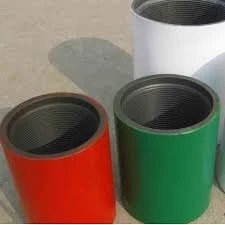- Afrikaans
- Albanian
- Amharic
- Arabic
- Armenian
- Azerbaijani
- Basque
- Belarusian
- Bengali
- Bosnian
- Bulgarian
- Catalan
- Cebuano
- Corsican
- Croatian
- Czech
- Danish
- Dutch
- English
- Esperanto
- Estonian
- Finnish
- French
- Frisian
- Galician
- Georgian
- German
- Greek
- Gujarati
- Haitian Creole
- hausa
- hawaiian
- Hebrew
- Hindi
- Miao
- Hungarian
- Icelandic
- igbo
- Indonesian
- irish
- Italian
- Japanese
- Javanese
- Kannada
- kazakh
- Khmer
- Rwandese
- Korean
- Kurdish
- Kyrgyz
- Lao
- Latin
- Latvian
- Lithuanian
- Luxembourgish
- Macedonian
- Malgashi
- Malay
- Malayalam
- Maltese
- Maori
- Marathi
- Mongolian
- Myanmar
- Nepali
- Norwegian
- Norwegian
- Occitan
- Pashto
- Persian
- Polish
- Portuguese
- Punjabi
- Romanian
- Russian
- Samoan
- Scottish Gaelic
- Serbian
- Sesotho
- Shona
- Sindhi
- Sinhala
- Slovak
- Slovenian
- Somali
- Spanish
- Sundanese
- Swahili
- Swedish
- Tagalog
- Tajik
- Tamil
- Tatar
- Telugu
- Thai
- Turkish
- Turkmen
- Ukrainian
- Urdu
- Uighur
- Uzbek
- Vietnamese
- Welsh
- Bantu
- Yiddish
- Yoruba
- Zulu
PUP Joint Specifications for Enhanced Performance and Reliability in Engineering Applications
Understanding Pup Joint Specifications in Oil and Gas Industry
In the oil and gas industry, drilling operations require specialized equipment designed to withstand extreme conditions, and pup joints are a vital component of drilling assembly. Pup joints are short lengths of pipe that are used to connect larger sections of drill pipe or casing. Their specifications can significantly affect the overall efficiency and safety of drilling operations.
What is a Pup Joint?
A pup joint is an essential piece of equipment in drilling operations, designed to adjust the length of the drilling string. They are available in various sizes and specifications to fit the diverse needs of the drilling process. Typically, pup joints are composed of the same materials as the other components of the pipe system, such as carbon steel or alloy steel, ensuring uniformity in strength and durability.
Types of Pup Joints
Pup joints come in several types, including
1. Standard Pup Joints These are commonly used to make minor adjustments to the length of the drilling string and provide a straightforward connection. 2. Heavyweight Pup Joints These are designed for increased strength and are often utilized in high-stress applications, where mechanical integrity is critical.
3. Spool Pup Joints These joints are looped or spooled designs that provide flexibility in connection, accommodating various drilling configurations.
Specifications of Pup Joints
When selecting a pup joint, it is vital to understand its specifications, as they dictate its functionality and compatibility with other drilling equipment. Key specifications include
pup joint specifications

1. Outer Diameter (OD) This is crucial as it needs to align with the inner diameter of the connected drill pipe or casing. Standard sizes typically range from 2 3/8 inches to 20 inches, depending on the drilling requirements.
2. Inner Diameter (ID) The ID contributes to the flow rate of fluids through the joint. A larger ID can improve drilling efficiency, while an accurately sized ID ensures compatibility with the pump systems.
3. Length The length of pup joints can vary significantly. Standard lengths typically are available, but custom lengths can be manufactured to fit specific operational needs.
4. Thread Type The connection threads at either end of a pup joint must match the threads of the pipes they are being connected to, ensuring proper sealing and pressure handling.
5. Pressure Rating This specification indicates the maximum pressure the pup joint can safely handle. It is crucial for preventing failures during high-pressure drilling operations.
6. Material and Coating The material dictates the strength and resistance to corrosion. Common materials include API grades of steel, while coatings are often applied for additional protection against harsh environments.
Importance of Compliance and Standards
To ensure safety and operational efficiency, pup joints must comply with industry standards such as those put forth by the American Petroleum Institute (API). Compliance with these standards ensures that the equipment used in drilling operations has met rigorous testing for quality and durability.
In conclusion, pup joints play an integral role in the functionality of drilling operations in the oil and gas industry. Understanding their specifications and ensuring compliance with industry standards is vital for maintaining the safety and efficiency of drilling projects. By selecting the appropriate pup joint type and specifications, operators can optimize their drilling operations, paving the way for successful oil and gas extraction.
-
Tubing Pup Joints: Essential Components for Oil and Gas OperationsNewsJul.10,2025
-
Pup Joints: Essential Components for Reliable Drilling OperationsNewsJul.10,2025
-
Pipe Couplings: Connecting Your World EfficientlyNewsJul.10,2025
-
Mastering Oilfield Operations with Quality Tubing and CasingNewsJul.10,2025
-
High-Quality Casing Couplings for Every NeedNewsJul.10,2025
-
Boost Your Drilling Efficiency with Premium Crossover Tools & Seating NipplesNewsJul.10,2025







